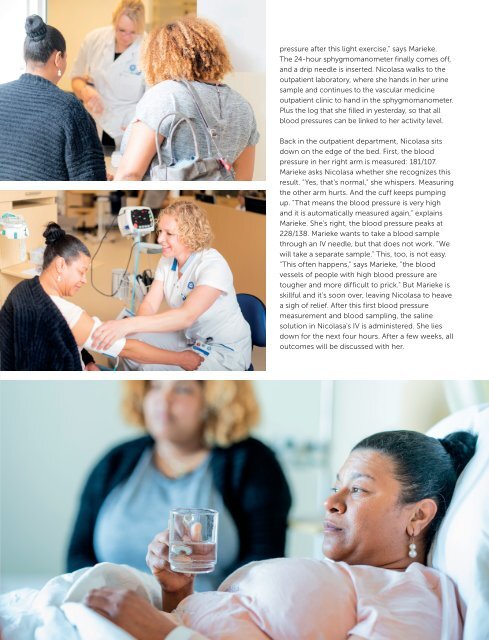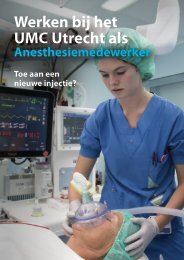Circulatory Health magazine
Create successful ePaper yourself
Turn your PDF publications into a flip-book with our unique Google optimized e-Paper software.
pressure after this light exercise," says Marieke.<br />
The 24-hour sphygmomanometer finally comes off,<br />
and a drip needle is inserted. Nicolasa walks to the<br />
outpatient laboratory, where she hands in her urine<br />
sample and continues to the vascular medicine<br />
outpatient clinic to hand in the sphygmomanometer.<br />
Plus the log that she filled in yesterday, so that all<br />
blood pressures can be linked to her activity level.<br />
Back in the outpatient department, Nicolasa sits<br />
down on the edge of the bed. First, the blood<br />
pressure in her right arm is measured: 181/107.<br />
Marieke asks Nicolasa whether she recognizes this<br />
result. "Yes, that's normal," she whispers. Measuring<br />
the other arm hurts. And the cuff keeps pumping<br />
up. "That means the blood pressure is very high<br />
and it is automatically measured again," explains<br />
Marieke. She's right, the blood pressure peaks at<br />
228/138. Marieke wants to take a blood sample<br />
through an IV needle, but that does not work. "We<br />
will take a separate sample." This, too, is not easy.<br />
"This often happens," says Marieke, "the blood<br />
vessels of people with high blood pressure are<br />
tougher and more difficult to prick." But Marieke is<br />
skillful and it's soon over, leaving Nicolasa to heave<br />
a sigh of relief. After this first blood pressure<br />
measurement and blood sampling, the saline<br />
solution in Nicolasa's IV is administered. She lies<br />
down for the next four hours. After a few weeks, all<br />
outcomes will be discussed with her.<br />
<strong>Circulatory</strong> <strong>Health</strong> Magazine 9















